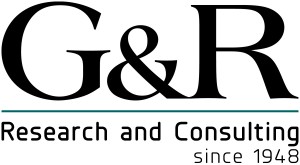The Downside to Digital’s Targeting
The power of the digital media over TV is the ability to deliver advertising to very specific demographic and attitudinal audiences. It also offers more direct ways to measure the consequences of advertising in influencing behavior. Digital’s targeting strength carries with it two problems:
- By focusing on “better/best” prospects, the “fair/not so good” prospects receive little or no messaging. This neglects the large base of people who may be less involved with the brand but are often responsible for most of its sales.
- The more targeted the audience, the more likely each member is to be hit and hit again with the brand’s advertising. Message oversaturation has a negative influence on brand attitudes.
Measuring Ad Effect
Achieving digital’s measurement strength – linking advertising effect to behaviors – has long been a goal for marketers. Behavior has been thought to be more predictive of sales than attitudes, the measurement domain of television advertising research. However, behaviors are not of equal importance to sales and brand building. Many measurable social media behaviors, such as likes, clicks, and even some social media sales, have more of a short-term influence on the brand. Television advertising, on the other hand, has both short-term and long-term effects, with most of television advertising’s value occurring over the long-term.
Why Long-Term Matters
Long-term effects go beyond the short-term sales that are directly influenced by the advertising, usually within the first few months of exposure. They are the less direct purchases that occur one or even two years after exposure from increased positive attitudes that show themselves through strengthened brand loyalty and weakened price sensitivity. Studies have pegged the average multiplier for the long-term advertising effect at approximately twice that of the short-term effect, with larger numbers having also been reported.[2]
Attitudes are the bundles of beliefs that one holds towards media, messaging, brands and behaviors. They result from the complex interaction of thoughts and feelings during deliberative and non-deliberative processing. The leading theories of how attitudes change[3] all share the idea of dual processing. That is, there are two routes to attitude change: one where we tend to deliberate about the messaging to which we are presented and another where we tend to intuit about what is seen and/or heard. Both processing paths influence attitudes, but differ in how consequential and permanent those influences are.
Long-term attitudes are difficult to change, but the evidence is strong that they can be influenced by advertising and are important to brand health. Clary and Dyson concluded that there is good evidence from published econometrics studies for long-term advertising effects in the range two to five times the short term. Binet and Field calculated that a 60:40 budget split between long- and short-term goals (brand and activation) coincides with “peak effectiveness and efficiency.”
The evidence, too, is that digital doesn’t match TV in producing long-term benefits. A series of studies conducted by TV companies have reported that TV’s long-form content does a better job than digital at connecting with consumers and delivering long-term brand building messages.
Learning from the Past

With digital advertising often acting more like promotion than brand advertising, perhaps there is a lesson to be learned from couponing. Like digital advertising, couponing has favorable cost advantages over TV advertising and the sales it produces are more easily tracked.[4] During a recessionary period in the 1990s, coupon usage grew rapidly. But as the economy recovered and more evidence came in, packaged-goods advertisers concluded that they had lost some long-term effect. They had conditioned consumers to expect the deals, eroding profit margins, heightening price sensitivity and eroding customer loyalty. While more recent studies have shown that coupons do make a long-term contribution, its effect is less than advertising. Couponing today, while still widely used, is at a 40-year low.
Looking Forward
If one company understands the future of digital advertising it is Facebook. After capturing a large portion of the short-term/direct response advertising market, Facebook is ramping up its efforts to create a media environment where audiences will be more likely to linger longer and consume the longer form advertising that brand-building needs. The company recently announced a more message-friendly section called “Watch” that will include programming like what one might see on cable, including commercial breaks, to put itself in a position to capture brand advertising.
Thirty-second ads presented in a TV context are the gold standard for messaging that strengthens positive attitudes, maximizes advertising return, and builds brands. However, TV programming is losing its audience, particularly in the younger adult age groups. Digital is attracting that audience, and brings with it the added value of precision targeting and behavior-driven measurement. Its engagement models, though, are not as conducive for conveying brand-building advertising as TV.
If TV is not able to right its ship and technology continues to be push marketing practice to media focused on the consumer’s next purchase, rather than the entire relationship, the distinction between long- and short-term advertising effects on brands will deserve careful consideration.
Footnotes
[1] In 2016, digital advertising revenue was up 22% over 2015 levels, versus 3.5% for TV. At $72.5 billion, digital advertising expenditures are, for the first time, in the same plane of TV ($72 billion).
[2] A 2014 study by CBS, Kellogg’s, and Nielsen reports that the impact may well be greater than two, and that it can vary substantially from brand to brand and campaign to campaign. The Clary and Dyson study cited below reports a range at two to five times.
[3] Petty and Cacioppo’s Elaboration Likelihood Model (ELM), Chaiken’s Heuristic-Systemic Model (HSM), and Kahneman and Tversky’s Thinking, Fast and Slow
[4] At the time, a new measurement technology, IRI’s BehaviorScan, showed a more powerful connection between coupons and sales then between TV advertising and sales.


Comments are closed.